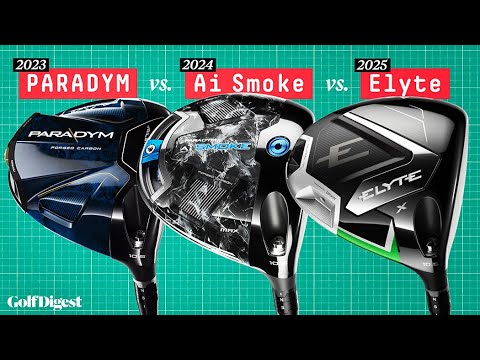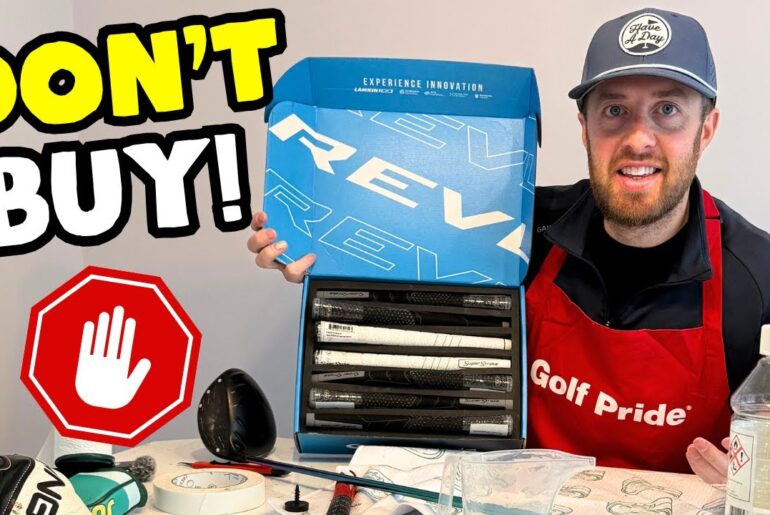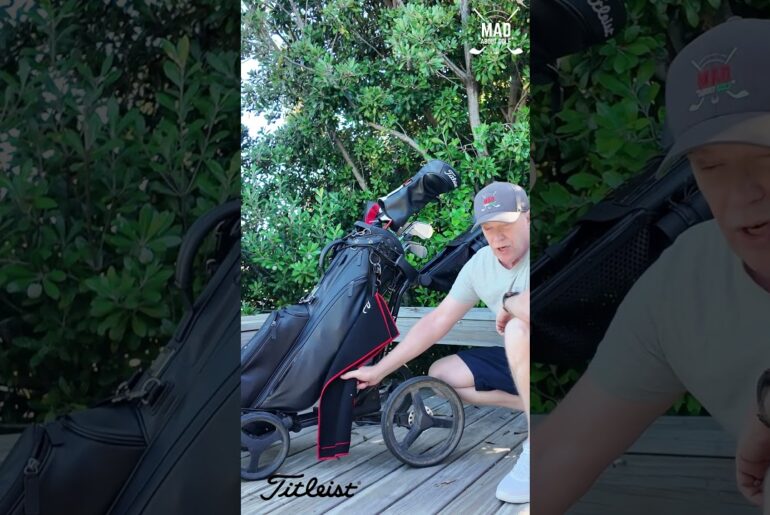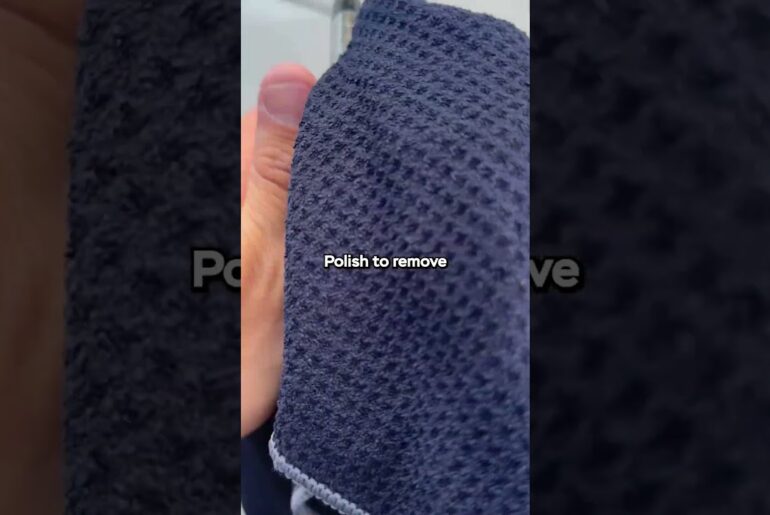It’s a question nearly all golfers ask themselves each season: “Should I upgrade my two or three year old driver to this years new model?”
In this episode of Robo Report, Golf Digest equipment experts Jonathan Wall and Gene Parente dive into the mountain of data gathered by the Golf Laboratories swing robot to reveal how the newest Callaway Elyte drivers stack up against their older models.
What do you think? Are you going to upgrade? Let us know!
Like, Subscribe and Comment with any questions or ideas for future episodes!
Follow GolfDigest:
Instagram / @GolfDigest
Twitter https://x.com/GolfDigest
Subscribe to Golf Digest on YouTube ►► http://bit.ly/golfdigestyoutubesub
Grab a Golf Digest + membership ►► http://glfdig.st/mFqM50OXuv4
ABOUT GOLF DIGEST
Home of the Hot List, Golf Digest +, news and trends, Golf Digest is the definitive destination for all things golf.
Chapters:
0:00 Intro
0:28 The Robot
1:25 Spin Rates
2:28 Shot Dispersions
3:14 Ball Speeds
4:04 Carry Distances
5:15 Who Should Upgrade?
6:07 Who Should NOT Upgrade?
6:48 Verdict
Should I upgrade my 3-year-old Callaway driver? Is this year’s model really that much better? We get these questions a lot, and it always comes with the same answer. It depends. Your swing is like a fingerprint. It’s unique and totally yours. So, it’s hard to say if one driver will work perfectly for everyone. But outside of getting a fitting, we have the next best thing, the Golf Laboratory’s Swing Robot. [Music] The swing robot has been delivering insights for 35 years and is used by the USGAA, RNA, and nearly every major manufacturer in the industry for club testing. And it often discovers pretty unexpected results when it comes to comparing new models and older models. We are going to bring you data that have previously only been accessible to the companies designing your equipment. When we test clubs, we run each 10 and a half degree driver head at 95 mph, which is a pretty average swing speed for most amateur golfers. This lets us gather a ton of useful data from spin rate and dispersion to ball speed and carry distance across nine different impact locations on the face. We also use the same shaft for a true apples to apples comparison. We’re able to acquire meaningful data points for 90% of the driver face, so practically every kind of miss is accounted for. Here’s what we found when we took the last three years of Callaway drivers for a spin. When it comes to spin rate, there’s a definite trend towards lower spin in this year’s models across the board, which can translate to more distance. But if you can somehow trend lower and keep the highest and lowest spin rates within just 700 RPMs of each other, you can basically hit it all over the face and not have to worry about that round cratering miss. It’s why we believe the Elite Triple Diamond and the Elite X are driver cheat codes. So, why should you care so much about spin rates? Because spin ultimately dictates carry distance. And if you want to bomb it out there, you need reliable spin to keep the ball in the air, especially if you produce inconsistent contact. Elite’s tight spin rates are even more impressive when you compare it to the AI Smoke Triple Diamond and the Paradigm Triple Diamond, where the high low spin rates were anywhere from 1,400 to,600 RPMs apart. Being able to improve spin consistency by 100 plus% confirms Callaway’s AI face provides a realworld benefit. When we break things down by overall shot dispersion, aka forgiveness, we saw a massive improvement from the 2023 Paradigm line to this year’s elite line. We are now seeing balls that were hanging in a bunch left of the center line, more concentrated around the middle. Think of this chart like shooting a gun at a target. It’s nice when the shot pattern is in a tight bunch, but not when it’s nearly off the target. You want everything to end up right around the bullseye. When you overlay the dispersion chart on an actual golf hole, you can see the Elite and AI Smoke Max deliver a straighter ball regardless of your impact location. In this case, you’re going from consistently living in the trees to finding the right and left rough with those bigger misses. We’re all looking for more distance off the tea, and this is the main reason why most golfers splurge for new driver. Looking at ball speed numbers recorded by the robot Elite was anywhere from 1 to2 m hour faster than AI Smoke and Paradigm, which isn’t all that impressive. No one’s spending $600 for 3 to 6 yards of additional distance. But what if you could gain 10 yards in some cases without making swing changes or improving consistency? Do we have your attention? Here’s where our data visuals paint an interesting picture. Not only are we seeing a 1 to2 mph increase at the high end of ball speed, but the bar chart is getting tighter on the back end, which is similar to what we saw with the spin rates. That means the variance in ball speed across the entirety of the face is improving. And that’s good news for one particular metric. So, we’re seeing tighter spin rates and ball speeds no matter where you’re hitting it. As you’d expect, that translates to larger carry distance numbers. And remember, if you swing faster than 95 mph, you will see greater distance increases. But let’s take a look at the low spin Elite Triple Diamond, which has historically been considered a driver model for better players with faster swing speeds. In most cases, low spin generally comes with a trade-off in overall forgiveness. I’d contend Elite Triple Diamond has more forgiveness than you might realize. Paradigm Triple Diamond had a carry distance ranging from 195 to 225 yards during testing, while Elite Triple Diamond range from 205 to 235. Yes, the Delta is 30 yards for both drivers. But you’re now 10 yards longer on even your worst mit. Elite X was even better, gaining 15 yards on its worst shots compared to AI Smoke MaxD and an additional five yards on the top end. Not only are these drivers longer across the board, but they’re longer where you need it most. Okay, so we’ve highlighted the robot data points that stood out to us. Let’s talk about who should be upgrading. The obvious answers to this question are Elite X and Elite Triple Diamond. It’s not often that the low spin model in the lineup winds up being the fastest and the most forgiving at 95 mph. At 105 mph, I can understand it, but we’re now living in a world where drivers no longer live in tidy buckets. Sometimes they blur the lines between multiple categories. The Elite X packs an absolute punch compared to the previous two versions. It’s not just fast, it is consistently fast regardless of where you’re hitting it. I can’t stress enough how massive those insights are for mid- handicappers with inconsistent contact. The fade bias also makes this a legitimate option for better players. If you didn’t get the memo, this one is special. Now, you shouldn’t upgrade if you hate distance and forgiveness. In all seriousness, I’d say someone who plays an auto fade might not like the straighter flight Elite and AI Smoke provide, but you can always dial in shot shape with adjustable weights. Golfers playing AI Smoke Max or Paradigm won’t see a massive uptick in performance going to Elite. So, that’s likely the one model where I’d say you’re probably good to hold unless you want a slight increase in ball speed, which Jonathan pointed out. But with Elite Triple Diamond and Elite X improving in a big way, it might make sense to test one of those to see if it’s a better fit. Let me be clear, Callaway has something cooking with Elite. Noticeable improvements in key metrics like spin rate, dispersion, and carry distance all but confirm these are drivers well worth considering for 2025, particularly if you’re playing the Paradigm Triple Diamond or the Paradigm X.








35 Comments
Facts dont matter its feels
Why would you not use Callaway's new high end Aretera shaft instead of the Ventus shaft?
Can you do this same testing with the TaylorMade drivers? Really informative video.
Is this a sales pitch or Callaway?
Please do Taylormade next!!!
Yes & No ……
How many rounds of golf & Range you hit per year ?
If more than 60 rounds + 2 baskets range balls 🧺 …… maybe 🤔
After that much of abusive the club face might be dented or damaged .
If less than 20 rounds – then No needs wasting money 💸
Cool clubs would have done this so much better
I don’t care. I just bought a new AI smoke last year. People cant buy a new 600$ driver every year. Screw that. Ill take my 250 yard drives I hit with my AI smoke last year
The Driver Shaft should be the True Conversation & Not the Driver Head? Plus, Property Grip size.
I wish the golf equipment manufacturers would settle on 3 naming options like: Max, Pro, Draw. The plethora of nomenclature across the differing manufacturers is maddening to me… but I’m dyslexic so it’s probably just me!
Crazy how every driver is the best ever and then dogshit the next year 🙄
My god the guy on the right is insufferable
If new drivers actually increased your distance 10 yards every year, we would be hitting it 500 yards by now.
Golf equipment has gotten too expensive. $600-$650 for a driver?! No thanks!
Is this an elyte ad? lol
What a great video
I like the idea of robot testing… but I can't stop laughing at the guy on the left when the guy on the right is talking. The guy on the left just stares at the camera and looks like he doesn't have a thought in his head.
I would love to know the dynamic loft, AoA, face to path, club speed (set vs. actual), ball speed, and land angle. Thank you 🙂
The Paradym dispersion looks great. It’s tight so that’s a matter of aiming it. Without more club numbers it’s difficult to know if it’s club head performance or a fitting issue when it comes to the distance.
When are we getting another every hole at video!? So many amazing courses left to highlight!!!
Calling bs
I would really enjoy switching drivers every new model, but since I play a short course and no tournaments, plus a family, I can’t! I’ll have to keep my Cobra Rad and wait till my son is big enough to use it.
Finally someone put up ACTUAL DATA that matters!! Thanks!!!
Paid ad?? Do it for all brands and clubs or don’t do it again.
i liked the part where you selectively displayed data to support your conclusion by not comparing the same 3 heads throughout, but instead switched up which heads you were comparing for each graph. this is not how objective evaluation works. this is bro science using a robot.
Awesome Gentlemen! Great clear and easy to understand data comparing models. This truly answers the question “Is it time to spend the money to upgrade”. Many Thanks!!
Interestingly, they left out the Ai Smoke TD Max which was and is praised as the unicorn: lower spin, neutral bias, high ballspeeds, very forgiving.
And I agree that a) this reeks of paid for content, and b) if every year we can expect to gain a few yards, where are my 350 yard drives? Get real, OEMs, everybody knows what’s up.
What if I have a Rogue ST Max LS 🤷🏻♂️
Love
My paradym , I also have a triple diamond ai smoke 💨 hard to choose between the 2
Love your GolfIQ podcast! Even Uncle Gene’s Coachella stories!
The data visualizations here are really helpful, especially the scatter dispersion overlay on a fairway.
Love your GolfIQ podcast! Even Uncle Gene’s Coachella stories!
The data visualizations here are really helpful, especially the scatter dispersion overlay on a fairway
An obvious Callaway promoted and sponsored video because the sales in the store right now of the new drivers based on shelf appeal and performance absolutely suck. Tested the new Elyte in the local golf shop and they fell hard I was not impressed I kept my Ai Smoke anyday. You can tell when they’re pushing a product and hyping it’s so high and they are the only video that is doing such the rest of it reveals the true results regardless of a robot.
Great AD… this doesn't seem at all believable or unbiased. Beside, if you only have a sub 100mph club head speed, you almost certainly should not be playing a low spin model. Far too many of your shots will have horribly low spin and will fall out of the sky.
Should I upgrade my 25 year old calloway driver??
so when are you going to compare Elyte vs DS Adapt?